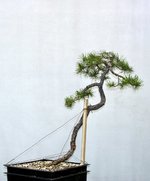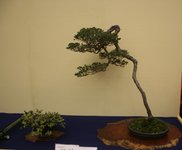The Warm Canuck
Chumono
Quick question.
When growing out a Pine Literatir.
What is the most common method employed? Are sacrifice branches used on the lower trunk? If so, is their not a problem with it creating too much lower taper?
Or, should developing a good mass of foliage on the upper most part of the tree be focused?
When growing out a Pine Literatir.
What is the most common method employed? Are sacrifice branches used on the lower trunk? If so, is their not a problem with it creating too much lower taper?
Or, should developing a good mass of foliage on the upper most part of the tree be focused?










